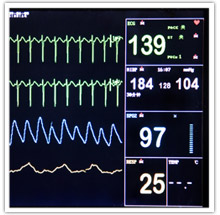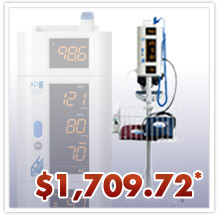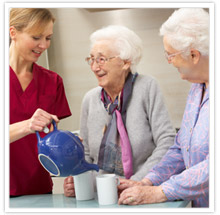 |
 |
Brush Up On Your Vital Signs What does someone's body temperature really tell you? Or their pulse? Which results are considered normal? Let's take a look at the four primary vital signs, temperature, blood pressure, pulse and respiratory rate. Body temperature Body temperature is a measure of the body's ability to generate and get rid of heat. An elevated body temperature can indicate a fever, which in turn is indicative of a systemic infection, severe trauma or injury, inflammation or a medical condition such as arthritis, hyperthyroidism and even some cancers. Body temperature can be measured in the mouth, ear, armpit, forehead and rectum. |
|
Normal range: The average body temperature is 98.6° F, but temperatures within 1 degree above or below this reading are still considered normal. Blood pressure Blood pressure involves recording two readings: the systolic pressure, which is the maximal contraction of the heart, and diastolic pressure, which represents resting pressure. This measurement is usually taken from the left arm, unless there is some damage to that arm. Elevated blood pressure, when the systolic number is consistently over 140-160 mmHg, is known as hypertension. Low blood pressure is referred to as hypotension. Normal range: 120 (systolic) over 80 (diastolic) Pulse The physical expansion of an artery creates a pulse. This measurement is recorded as beats per minute and is usually taken at the wrist or ankle. It can also be taken at the elbow, against the carotid artery in the neck, behind in the knee or in the foot. While a lower pulse is generally preferable, a very low pulse, or bradycardia, can be dangerous and lead to weakness, loss of energy and fainting. Normal range: For adults, the normal pulse rate is 50-80 beats per minute Respiratory rate Respiratory rate, or the numbers of breaths taken in a minute, can indicate potential respiratory dysfunction. The rate is obtained by counting how many times the chest rises during a minute. The rate can increase with fever, illness or other medical conditions. When obtaining a respiratory rate, it's also important to see whether the person is having difficulty breathing. Normal range: 12-20 breaths per minute |
|||
|
Equipment for monitoring vital signs has grown much more sophisticated over the years. New devices can obtain readings in seconds, freeing staff members to spend their time on other areas of care and reducing resident inconvenience to a minimum. Vital signs units are also available in modular designs that allow caregivers to snap together the pieces they’ll need and have them in one place – no more fumbling for misplaced thermometers! |
|||
|
To learn more about which vital signs solutions best fit your needs, contact your ProMed territory manager or give us a call at (800) 648-5190. |
|||
 |
ADView™ Modular Diagnostic Station It's easy to configure the ADView Modular Diagnostic Station to meet your specific needs. The blood pressure, temperature and pulse oximetry modules feature a "connect-and-go" capability to make adding or removing modules effortless. No tools are required! Additional Features:
|
||
|
Product pricing is only visible to registered promedsupply.com customers. If you are not yet registered, give us a call at (800) 648-5190 and our Customer Care Professionals will be happy to get you set up. |
|||
 |
|||
 |
|||
 |
